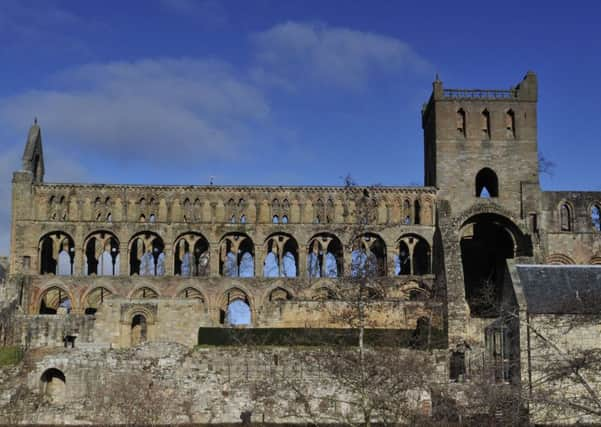On the Wildside


Some of the stone carvings are superb but some later repairs were made hastily. Most of the building including the chapter house and cloisters remain and are accessible to visitors.
Local quarries did not provide all the sandstone. Some could have come from as far as Cumbria. The herb garden has been lovingly recreated.
Advertisement
Hide AdAdvertisement
Hide AdPrestigious buildings like the town hall and banks have sandstone ashlar blocks with smooth facings or carefully incised patterns. Pillars at the entrances of the larger houses were popular in Georgian and Victorian times. They denoted the owners’ affluence.
The stones of the house associated with Mary Queen of Scots who stayed there in 1566 has a more primitive stone exterior with stones of different shapes, sizes and colours patched together with copious amounts of mortar. Some of the rounded boulders might have been gathered locally from the river and there are some rocks which could have come from the Whin Sill or from the Cheviot area.
Heading behind the Rugby Club to Jed Water you are confronted with a 30 metre cliff of a striking red colour. Closer examination from the opposite bank reveals horizontal stratas of red and green. Landslips due to faults reveal the thin green undersides more clearly. It is thought these are greenish marls or clays that cause a weakness in the rocks.
The main sandstones were laid down in Devonian lakes (about 350 million years ago) when Britain was still in the tropics and became red due to iron becoming oxidized. Notices warn people about the hazards of swimming near this cliff which is quite unstable. In the early days of summer the cliffs are the haunts of numerous small birds including great tits and martins. There is possibly at least one nesting pair of dippers in the vicinity.
Advertisement
Hide AdAdvertisement
Hide AdFurther downstream at Allar’s Mill is a glimpse of one of Hutton’s Unconformities. This was discovered by James Hutton in 1787 when he realized the huge enormity of time that rocks take to form. The underlying Silurian greywacke rocks were laid down horizontally but then were wrenched to a vertical position by earth forces.
Erosion and aeons of time elapsed before the Devonian rocks formed on top. This is more clearly visible at Siccar Point on the Berwickshire coast on the way to Dunbar but he first noticed this phenomenon in Arran and then in Jedburgh. Unfortunately today it is hard to see due to thick vegetation. A sculpture by Max Nowell commemorates the unconformity in Lothian park in Jedburgh.